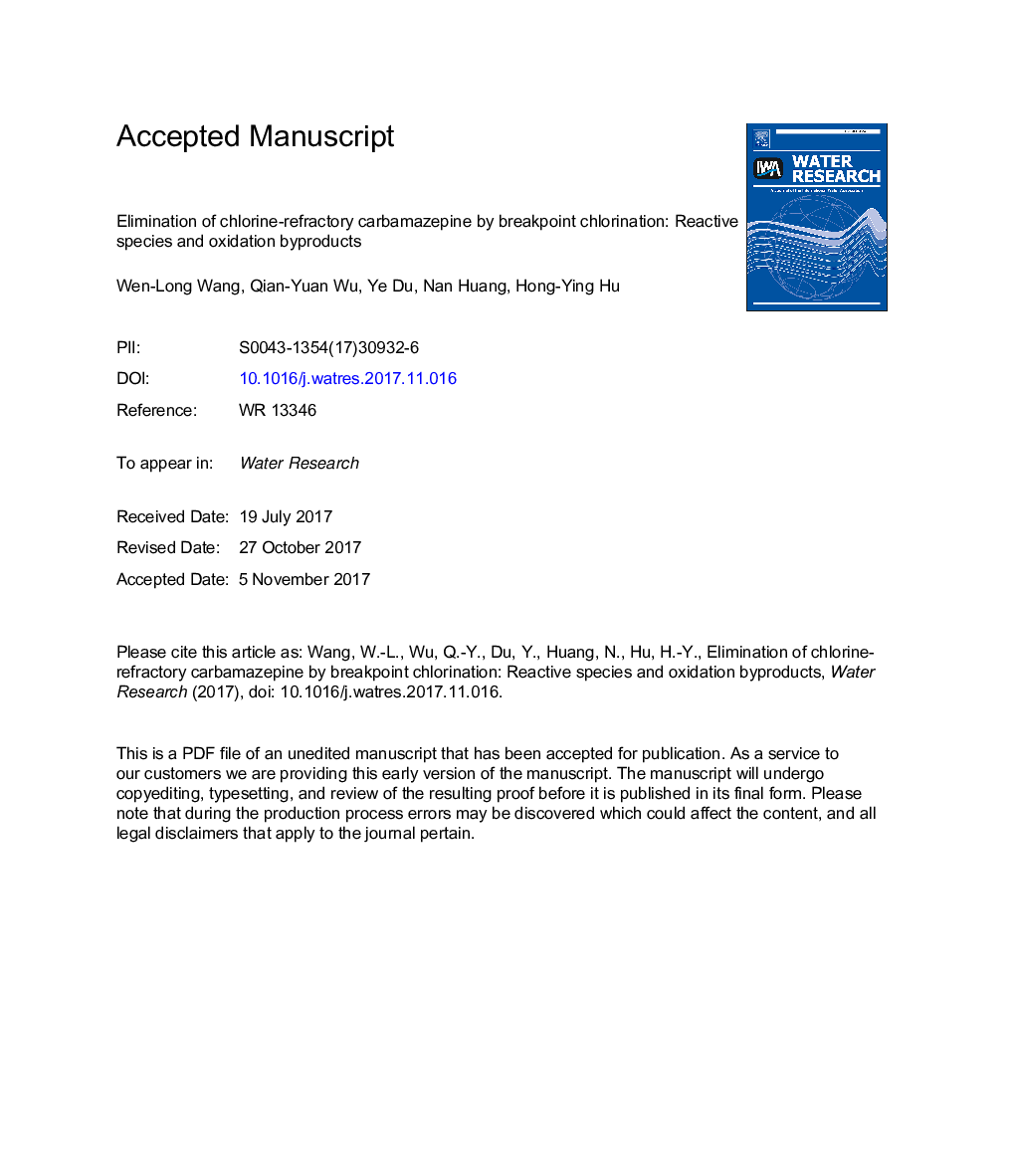| کد مقاله | کد نشریه | سال انتشار | مقاله انگلیسی | نسخه تمام متن |
|---|---|---|---|---|
| 8874625 | 1623039 | 2018 | 30 صفحه PDF | دانلود رایگان |
عنوان انگلیسی مقاله ISI
Elimination of chlorine-refractory carbamazepine by breakpoint chlorination: Reactive species and oxidation byproducts
ترجمه فارسی عنوان
از بین بردن کاربامازپین مقاوم در برابر کلر به وسیله ی کلر زدایی: گونه های واکنشی و محصولات جانبی
دانلود مقاله + سفارش ترجمه
دانلود مقاله ISI انگلیسی
رایگان برای ایرانیان
کلمات کلیدی
کلرین متوقف می شود کاربامازپین، گونه های رادیکال، هالید آلی قابل جذب، سمیت مسمومیت،
موضوعات مرتبط
مهندسی و علوم پایه
علوم زمین و سیارات
فرآیندهای سطح زمین
چکیده انگلیسی
Breakpoint chlorination can be commonly observed in the chlorination of water treatments when ammonia is present. In this study, it was found that breakpoint chlorination can remarkably eliminate a ubiquitous and chlorine-refractory micropollutant, carbamazepine (CBZ), with the removal of 72% at neutral condition. At neutral pH, low CBZ elimination was observed at a chlorine/ammonia molar ratio (Cl/N) of 1.0 and higher CBZ elimination was observed as Cl/N ratio increased from 1.0 to 1.6 (breakpoint), indicating that CBZ elimination was closely related to the generation and decomposition of chloramines. The chloramines generation and decomposition rates were affected by the pH, so that the CBZ elimination rate was highest at pH 7.0 and lower in acidic and basic solutions (pH 5.5 and pH 9.5, respectively). The CBZ elimination at pH 7.0 was 72.4% after 10Â min of breakpoint chlorination, while reaction times about 30Â min and 60Â min were required to achieve the same elimination at pH 5.5 and pH 9.5, respectively. Breakpoint chlorination of CBZ was strongly suppressed by radical scavenger tBuOH and moderately suppressed by N2 purging, the inhibiting ratios being 87.7% and 27.8% at breakpoint, respectively. Electron spin resonance experiments suggested that unidentified radicals were generated by breakpoint chlorination. The OH and unidentified radical species contributions to CBZ elimination were <23.7% and >76.3%, respectively, when a pseudo steady state breakpoint chlorination was performed in a microinjection system with nitrobenzene as OH probe. Although CBZ were efficiently eliminated, breakpoint chlorination of CBZ generated adsorbable organic chlorine. The cytotoxicity of the CBZ solution was therefore increased by breakpoint chlorination, suggesting that biological risk caused by the breakpoint chlorination of micropollutants should be taken into consideration.
ناشر
Database: Elsevier - ScienceDirect (ساینس دایرکت)
Journal: Water Research - Volume 129, 1 February 2018, Pages 115-122
Journal: Water Research - Volume 129, 1 February 2018, Pages 115-122
نویسندگان
Wen-Long Wang, Qian-Yuan Wu, Ye Du, Nan Huang, Hong-Ying Hu,
